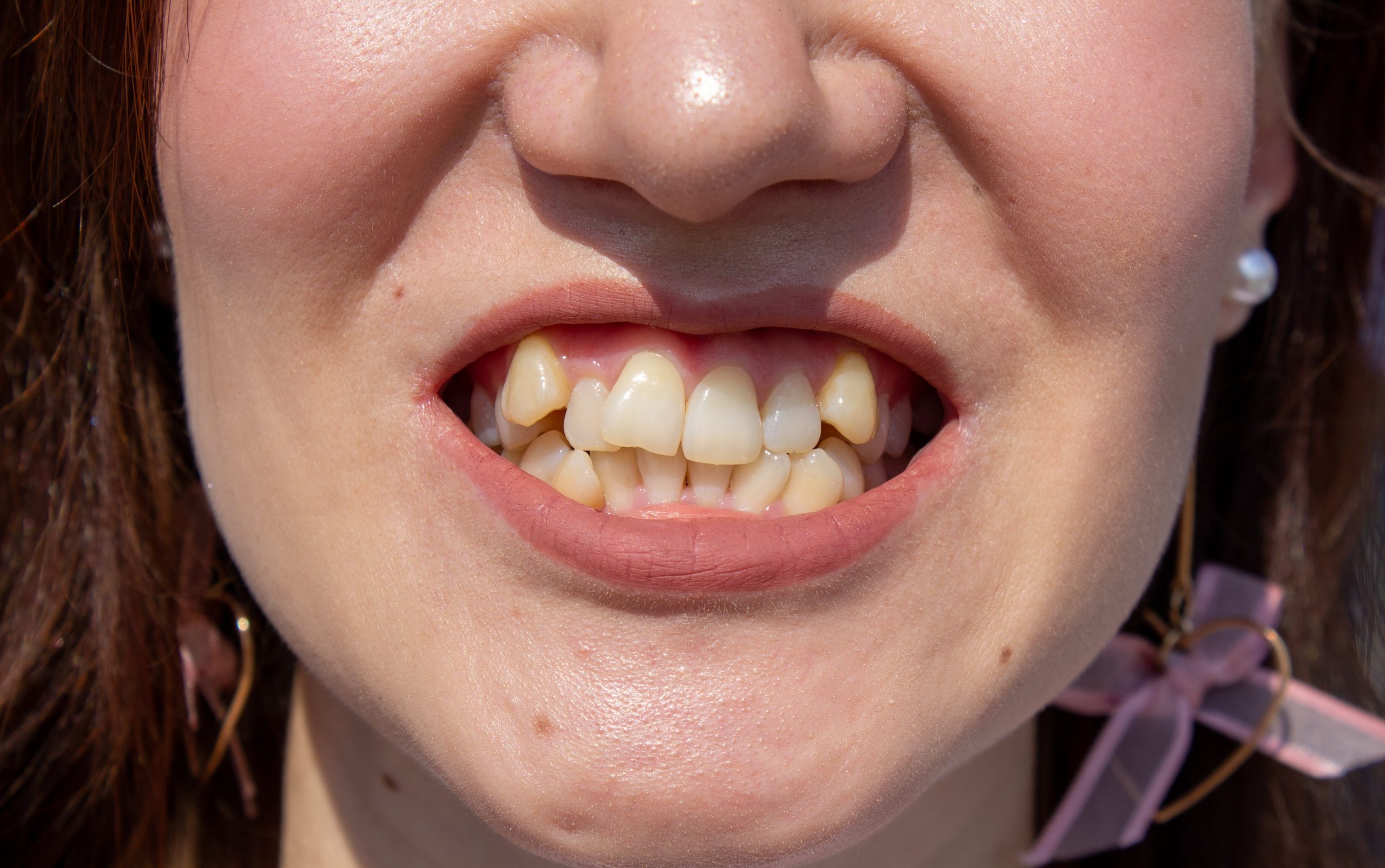In this article, we'll explore the potential issues associated with different teeth straightening options so that you can make an informed decision about your orthodontic treatment.
Problems and Risks of Dental Braces
- Pain and discomfort: Braces can cause some discomfort and pain during treatment, especially in the first few days after they are applied or tightened.
- Length of treatment time: Braces treatment can take a long time, often up to 12-24 months. This can be a long-term commitment for some patients.
- Need for regular adjustments and check-ups: Braces require regular adjustments by your dentist to ensure they are working correctly. Patients must also maintain monthly check-ups with their orthodontist to monitor progress and check for potential issues.
- Difficulty eating certain foods: Patients must avoid certain hard or sticky foods that can damage the braces or get stuck in them, causing discomfort, fracture of brace or pain.
- Oral hygiene maintenance: Patients must maintain good oral hygiene throughout treatment to prevent tooth decay or gum disease, which can be more challenging to clean around the brackets and wires of the braces.
- Speech difficulties: Some patients may experience difficulty speaking due to the presence of the braces.
- Enamel damage: In some cases, braces can cause enamel damage or decalcification of the teeth.
- Inconvenience and aesthetic concerns: Braces can be visible, and some patients may find them unattractive or inconvenient to wear. Ceramic braces are far less visible than metal braces.
Problems and Risks with Clear Aligners
- Discomfort from aligners pressing on teeth: Some patients may experience pain or soreness when first starting treatment or when changing to a new set of aligners.
- Clear aligners can be lost or misplaced: Patients must be careful to keep the aligners, which can be costly to replace and may delay treatment progress.
- The inconvenience of removing aligners for eating and cleaning: Patients must remove them to eat, drink anything other than water and brush their teeth. This can be inconvenient and disrupt meal times.
- Need for regular check-ups and appointments: Patients must maintain 2-monthly check-ups with their orthodontist to ensure the aligners are working correctly and progress is being made.
- Tooth decay or gum disease if oral hygiene is not maintained: As with other teeth straightening options, good oral hygiene is essential to prevent tooth decay or gum disease during treatment.
- Speech difficulties: Some patients may experience difficulty speaking initially due to the presence of the aligners.
- Length of treatment time: Aligners can take a long time to correct dental issues, depending on the severity of the case.
- Clear aligners are unsuitable for all cases: More severe orthodontic issues may require alternative treatment.
Potential Problems and Risks with Lingual Braces
- Discomfort and speech difficulties: Some patients may experience discomfort and speech difficulties throughout the treatment due to the braces on the back of the teeth.
- Need for regular adjustments and check-ups: Braces require regular adjustments by your dentist to ensure they are working correctly. Patients must also maintain monthly check-ups with their orthodontist to monitor progress and check for potential issues.
- Length of treatment time: Lingual braces can take a long time to correct dental issues, depending on the severity of the case.
- Difficulty eating certain foods: Patients must avoid certain hard or sticky foods that can damage the braces or get stuck in them, causing discomfort or pain.
- Oral hygiene maintenance: Patients must maintain good oral hygiene throughout treatment to prevent tooth decay or gum disease, which can be more challenging to clean around the brackets and wires of the braces.
- Cost and insurance coverage: Lingual braces are the most expensive orthodontic treatment option. Insurance coverage may only sometimes be available or sufficient.
- Enamel damage: In some cases, braces can cause enamel damage or decalcification of the teeth.
- Difficulty adjusting to the feel of braces on the back of the teeth: Lingual braces can take some time to get used to, and patients may find the feel of the braces on the back of the teeth uncomfortable.
Problems and Risks Dental Veneers
- Not suitable for all cases: Dental veneers are a cosmetic option that can only address minor cosmetic issues and is not an appropriate option for more severe dental problems.
- Cost and insurance coverage: Veneers can be expensive, and insurance coverage may only sometimes be available or sufficient.
- Can damage the teeth: using veneers as an option for teeth straightening will weaken teeth and cause sensitivity
- May require replacement: Veneers may need to be replaced every 10-15 years, which can be costly and inconvenient.
- Not a permanent solution: Veneers do not correct underlying dental issues and may not be a permanent solution.
Choosing the correct teeth straightening option can be challenging, and it's important to be aware of each option's potential problems and risks. While there are benefits to each treatment, it's essential to weigh these against the potential issues to determine the best choice for your individual needs.
For further information, please complete the form below and one of the team will be in touch within 24 hours.

